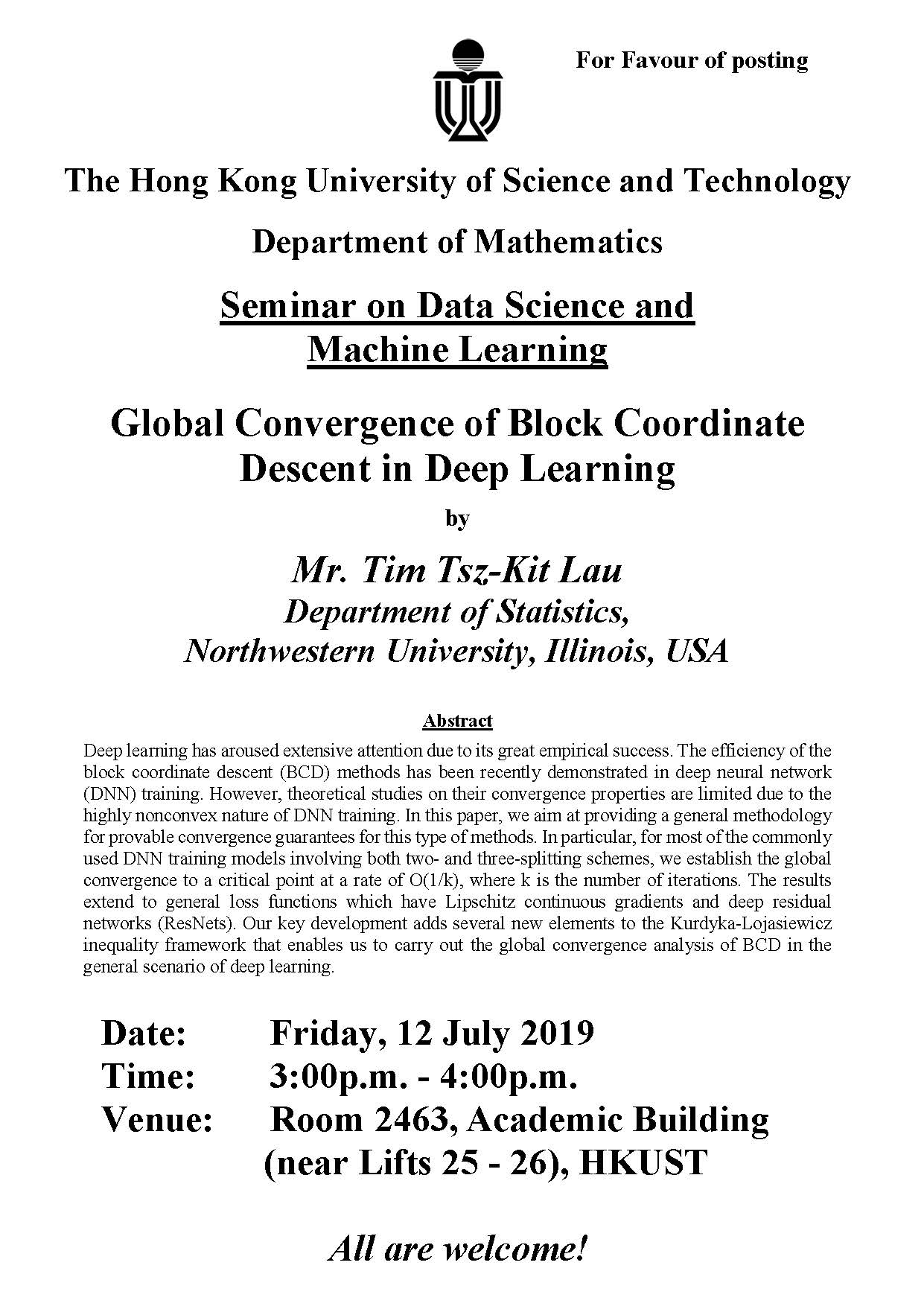More about HKUST
Deep learning has aroused extensive attention due to its great empirical success. The efficiency of the block coordinate descent (BCD) methods has been recently demonstrated in deep neural network (DNN) training. However, theoretical studies on their convergence properties are limited due to the highly nonconvex nature of DNN training. In this paper, we aim at providing a general methodology for provable convergence guarantees for this type of methods. In particular, for most of the commonly used DNN training models involving both two- and three-splitting schemes, we establish the global convergence to a critical point at a rate of O(1/k), where k is the number of iterations. The results extend to general loss functions which have Lipschitz continuous gradients and deep residual networks (ResNets). Our key development adds several new elements to the Kurdyka-Lojasiewicz inequality framework that enables us to carry out the global convergence analysis of BCD in the general scenario of deep learning.
12 Jul 2019
3:00pm - 4:00pm

Where
Room 2463, Academic Building (near Lifts 25 - 26)
Speakers/Performers
Mr. Tim Tsz-Kit Lau
Department of Statistics, Northwestern University, Illinois, USA
Department of Statistics, Northwestern University, Illinois, USA
Organizer(S)
Department of Mathematics
Contact/Enquiries
mathseminar@ust.hk
Payment Details
Audience
Alumni, Faculty and Staff, PG Students, UG Students
Language(s)
English
Other Events

6 Jan 2026
Seminar, Lecture, Talk
IAS / School of Science Joint Lecture - Innovations in Organo Rare-Earth and Titanium Chemistry: From Self-Healing Polymers to N2 Activation
Abstract
In this lecture, the speaker will introduce their recent studies on the development of innovative organometallic complexes and catalysts aimed at realizing unprecedented chem...

5 Dec 2025
Seminar, Lecture, Talk
IAS / School of Science Joint Lecture - Human B Cell Receptor-Epitope Selection for Pan-Sarbecovirus Neutralization
Abstract
The induction of broadly neutralizing antibodies (bnAbs) against viruses requires the specific activation of human B cell receptors (BCRs) by viral epitopes. Following BCR activation, ...

